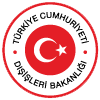News

[ad_1]
Rescuers pulled an American researcher out of a Turkish cave on Monday, more than a week after he became seriously ill 1,000 meters (more than 3,000 feet) below its entrance, said the Speleological Federation of Turkey.
Teams from across Europe had rushed to Morca cave in southern Turkey’s Taurus Mountains to aid Mark Dickey, a 40-year-old experienced caver who became seriously ill on Sept. 2 with stomach bleeding. He was on an expedition to map the cave, which is the country’s third deepest.

A Turkish officer walks next to the Morca cave during a rescue operation near Anamur, south Turkey, Saturday, Sept. 9, 2023. (AP)
For the latest headlines, follow our Google News channel online or via the app.
Dickey was too frail to climb out himself, so rescuers carried him with the help of a stretcher, making frequent stops at temporary camps set up along the way.
“Mark Dickey is out of the Morca cave. He is fine and is being tended to by emergency medical worker in the encampment above,” said a statement by the speleological federation on Monday. “Thus, the cave rescue part of the operation has ended successfully. We congratulate all those who have contributed!”
A statement from Mark’s parents. Debbie and Andy Dickey, said the fact that their son “has been moved out of Morca Cave in stable condition is indescribably relieving and fills us with incredible joy.”
The American was first treated inside the cave by a Hungarian doctor who went down the cave on Sept. 3. Doctors and rescuers then took turns caring for him. The cause of Dickey’s illness was not clear.

A medical team takes care of American caver Mark Dickey, center, 40, inside the Morca cave near Anamur, southern Turkey, Saturday, Sept. 9, 2023. (AP)
The biggest challenges for the rescuers were the steep vertical sections and navigating through mud and water at low temperatures in the horizontal sections. There was also the psychological toll of staying inside a dark, damp cave for extended periods of time.
Around 190 experts from Bulgaria, Croatia, Hungary, Italy, Poland and Turkey took part in the rescue, including doctors, paramedics and experienced cavers. Teams comprised of a doctor and three to four other rescuers took turns staying by his side at all times.

A European Cave Rescue Association (ECRA) member prepares in front of his tent, to go down into the Morca cave during a rescue operation near Anamur, south Turkey, Friday, Sept. 8, 2023. (AP)
The rescue began on Saturday after doctors, who administered IV fluids and blood, determined that Dickey could make the arduous ascent.
Before the evacuation could begin, rescuers first had to widen some of the cave’s narrow passages, install ropes to pull him up vertical shafts on a stretcher and set up temporary camps along the way.

Members of the CNSAS, Italian alpine and speleological rescuers, start to descent on ropes the Morca cave during a rescue operation near Anamur, south Turkey, Monday, Sept. 11, 2023. (AP)
Dickey, who is from Croton-on-Hudson, New York, is a well-known cave researcher and a cave rescuer himself who had participated in many international expeditions.
He and several other people on the expedition were mapping the 1,276-meter (4,186-foot) deep Morca cave system for the Anatolian Speleology Group Association. Dickey became ill on Sept. 2, but it took until the next morning to notify people above ground.
Turkish authorities made a video message available that showed Dickey standing and moving around on Thursday. While alert and talking, he said he was not “healed on the inside” and needed a lot of help to get out of the cave. He thanked the caving community and the Turkish government for their efforts to rescue him.
Read more:
Rescue begins of US man stuck 3,000 feet inside a Turkish cave: Officials
US cave explorer trapped in Turkey records video message
[ad_2]
Source link





